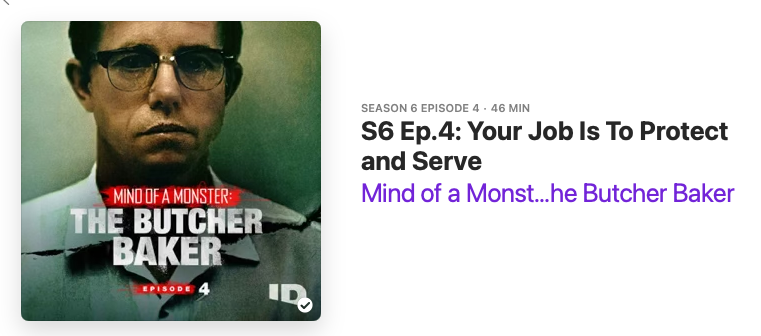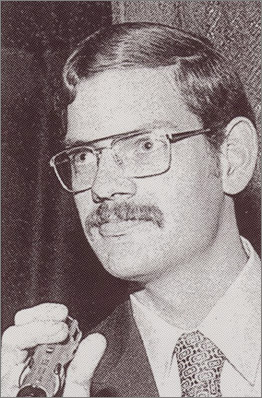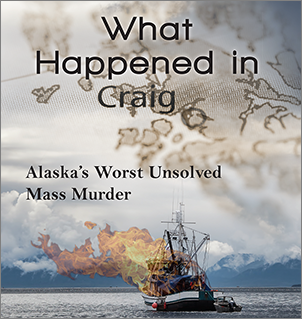Mind of a Monster: Ep. 4
Episode 4 of Mind of a Monster: The Butcher Baker, takes us into the Alaska Bush. Two teenaged boys, out hunting moose in the fall of 1983, come across another set of human remains on the Knik River. What’s curious is that they find these remains in a spot accessible only by boat or airplane. That finding sends investigators headlong into a new job. No longer able to deny a serial murderer in their midst, they set out to find the guy — or guys — who’ve had strange, violent encounters with the dancers and sex workers of Anchorage.

Not Surprised
Of all the cops in Anchorage, the only one who is NOT surprised is Maxine Farrell. But there’s one problem. The Knik River is within the jurisdiction of the Alaska State Troopers. Essentially that means it’s “off limits” to the Anchorage police. Except, of course, the better angels of Alaska had put together a cross-jurisdictional Task Force that includes cops from both the State Troopers and the Anchorage police. Farrell wants into the Task Force. Her superiors turn her down. Bafflingly, she won’t be joining the team that’s suddenly got Job #1. Was it something about an unwillingness to confess the error of their ways?
(It’s worth noting that, post-Hansen, the entire homicide division of APD was radically reorganized.)

Glenn Flothe On The Job
On the Trooper side, it didn’t take long for Sgt. Glenn Flothe to realize that he had live witnesses who’ve seen and heard more than their share. Helped by Farrell’s case records, and the legwork of APD Officer Gregg Baker, Flothe starts digging. Between them, they soon have multiple women who can help draw a bead on a possible suspect.
One of the live witnesses is a seventeen-year-old sex worker named Cindy Paulson. Another is a dancer named Christine Hayes. Flothe resolves to talk to these women. They are, it turns out, his case. Or, should we say, a few of the tent poles in his case.
A Dancer Who Survived
Take Christy Hayes. Going through the case reports, Flothe came across a 1979 report involving a young woman who escaped Hansen after an encounter that would scar her for life. According to the police report:
- Officer Hammond contacted [a] black female, who identified herself as Christine Hayes. She… was working as a dancer at the Embers Bar in Anchorage, and … had met a caucasian male in the bar. She agreed to have a date with him when she got off work… Once they were in the back of [his] camper, the man produced a revolver and pointed it at her and tied her hands and feet with wire. He then got in the cab of the truck …drove to the vicinity of Bunnell and Chena Streets, and parked.
Hayes miraculously escaped. It wouldn’t take long for police to learn that her kidnapper was Robert C. Hansen. Indeed, it was Christy Hayes who led them to the man, months later, when she was working at another club. It wasn’t their only encounter. There was at least one more. That was when Christy went for a job interview at a local bakery. She was tired of dancing. Needed something else. Maybe bakery work was just the ticket. A day job.
I went in there and put the application in… I filled out the application and give it to him. I left it on the counter. He came around that corner. I seen him, he seen me. I knew who he was. He knew who I was, obviously, and the hair just stood on the back of my neck. I said, never mind. I don’t want to work there and went out the door… That’s the man who kidnapped me. That’s him. But it was too late. He already had the application. My Social Security number, address, phone number, everything. He had all the information on me.
Christy Hayes (copyright 2023)
That last encounter scared Christy Hayes more than any other. She had seen Hansen face-to-face. He had seen her. Had recognized her. And now he had her name, address and telephone number. That’s how you spell PTSD, over and over and over.
Maxine Farrell On Point
It should be noted here that Sgt. Flothe explicitly recognizes the critical role of Maxine Farrell. It was, he notes, a job she took seriously enough to work all the angles. Including, Flothe notes, the press angle.
The Press had put it together, basically. It was probably through Maxine Farrell, who I think was probably leaking to the press what she knew was going on. To try to get public sympathy or public pressure back into her own office, through a roundabout way, to say “hey, let’s put some people on this, let’s take a good look at this.”
AST Sgt. Glenn Flothe on Maxine Farrell
One More Thing
When investigators tracked down all the Anchorage men who’d had strange encounters with the sex workers of their fair city, they had eight promising suspects. Only one of them owned an airplane. It could be him. It definitely could be him.
Tune In Now
I won’t add more because, really, you should check out the podcast for yourself. This is great story telling that adds a lot to the base story Walter Gilmour and I shared with the world more than thirty years ago.
[Amazon Podcast] [Apple Podcast] [Google Podcast] [Spotify Podcast]
Dr. Michelle Ward has a PhD in Clinical Neuroscience/Psychology from USC. She has served as an expert trial consultant in criminal cases involving a multitude of violent murderers. Her podcast series features her own personal and professional insights, as well as comments from family and friends of both the killer and the victim.
Copyright Leland E. Hale (2024). All rights reserved.

Purchase Butcher, Baker
Order my latest book, “What Happened In Craig,” HERE and HERE. True crime from Epicenter Press about Alaska’s Worst Unsolved Mass Murder.
